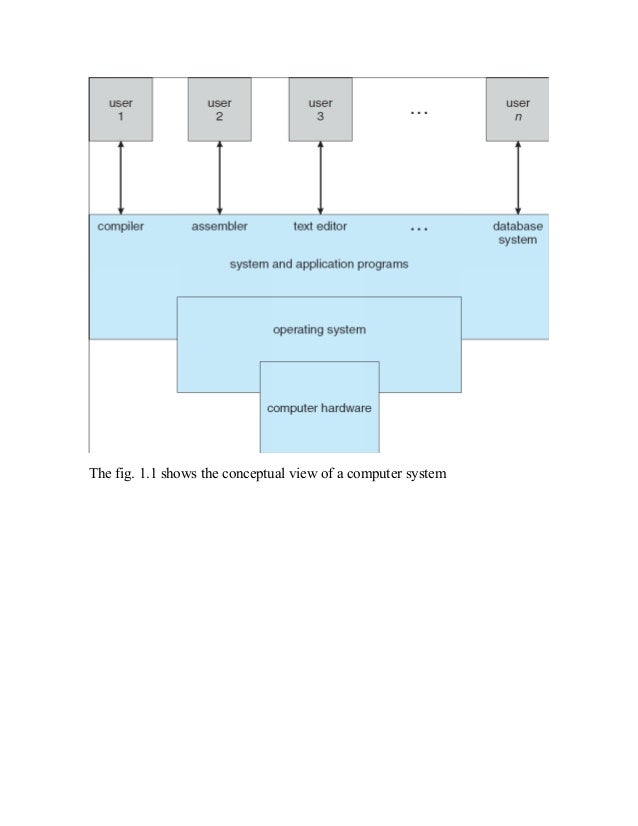Gary Nutt Operating Systems 3rd Edition Pearson 2004 Pdf Viewer

Description Operating Systemsprovides an understanding of contemporary operating system concepts by integrating the principles behind the design of all operating systems with how they are put into practice in the real world. Throughout, Gary Nutt provides a complete discussion of operating concepts and supplements this with real code examples, algorithms, and discussions about implementation issues. The book also includes many lab exercises that provide students with the opportunity to practice with Linux, UNIX, and Windows. Features • Provides a balanced introduction to operating system concepts by integrating OS theory with examples from real operating systems (Linux, Unix, Windows). • Student-focused writing that presents the big idea of each concept before presenting the details. • Extended lab sections between chapters include projects on: shell programming, kernel timers, memory-mapped files, TCP/IP, etc.
• Flexible arrangement of information within chapters allows professors to choose the breadth and depth of each topic. New to this Edition • Updated and extended Table of Contents, including additional material on threads, storage media, security, handheld and wireless devices, and more. More than twice as many are included to give students substantial hands-on experience with Linux, UNIX and Windows XP. • The number of exercises throughout the book has increased by more than 20%. • Best supplements of all OS books. Companion Web site includes: more labs, Unix and C reference, student study guide, testbank, solutions, suggested syllabi and more!
Operating Systems (MCC-302). Branch.: MCA. Semester.: 3rd Semester MCA(July-Dec, 2016). Dining Philosopher Problem, Reader Writer Problem. Gary Nutt, 'Operating Systems”, 3 Edition, 2004, Pearson Education Inc., New Delhi. Nutt is a Professor of Computer Science at the University of Colorado. He has also worked as researcher at Xerox PARC and Bell Labs, and as a corporate Vice President and manager of the Boulder office of Interactive Systems. His research interests are in operating systems, distributed systems, performance, and collaboration technology.
Table of Contents Preface. Computers and Software. Operating System Strategies. Using the Operating System.
The Programmer's Abstract Machine. Processes and Threads. Writing Concurrent Programming.
Lab Exercise: A Simple Shell. Lab Exercise: A Multithreaded Application.
Operating System Organization. Basic Functions. General Implementation Considerations. Contemporary OS Kernels. Lab Exercise: Observing OS Behavior.
Computer Organization. The von Neumann Architecture. The Central Processing Unit.
The Primary (Executable) Memory. Conventional Contemporary Computers. Mobile Computers. Multiprocessors and Parallel Computers. Device Management. The I/O System.
I/O Strategies. Device Manager Design. Device Class Characteristics.
Volodimir vinnichenko komedya z kostem plan. If the input format is directory-based, it is necessary to pack whole directory - not only the content. Files can be uploaded by multiple selection or you can pack them to any supported format (ZIP, RAR, 7Z, TAR, GZIP). Then it is possible to transform your data to any other coordinate reference system. If the coordinate system of your input data is not present or not recognized correctly, it is posible to assign the correct one. Converter also supports more than 90 others vector and rasters GIS/CAD formats and more than 3 000 coordinate reference systems.
Lab Exercise: A Floppy Disk Driver. Implementing Processes, Threads, and Resources. The Task at Hand. The Hardware Process. The Abstract Machine Interface. The Process Abstraction. The Thread Abstraction.
State Diagrams. Resource Managers. Generalizing Process Management Policies. Lab Exercise: Kernel Timers. Lab Exercise: Manipulating Kernel Objects. Scheduling Mechanisms.
Strategy Selection. Non-Preemptive Strategies. Preemptive Strategies. Implementing the Scheduler. Lab Exercise: Analyzing the Round Robin Scheduling.
Basic Synchronization Principles. Cooperating Processes. Evolving from the Classic Solution. Semaphores: The Basis of Modern Solutions. Synchronization in Shared Memory Multiprocessors.
Lab Exercise: Bounded Buffer Problem. High-Level Synchronization and Interprocess Communication. Alternative Synchronization Primitives.
Interprocess Communication. Lab Exercise: Using Pipes. Lab Exercise: Refining the Shell. A System Deadlock Model. Detection and Recovery. Memory Management.
The Address Space Abstraction. Memory Allocation.
Dynamic Address Space Binding. Modern Memory Manager Strategies. Lab Exercise: Using Shared Memory. Virtual Memory. The Task at Hand. Address Translation.
Static Paging Algorithms. Dynamic Paging Algorithms.
Memory-Mapped Files. Lab Exercise: Memory-Mapped Files. File Management. The Task at Hand. Low-Level File Implementations.
Supporting High-Level File Abstractions. Implementing Directories. File Systems. Lab Exercise: A Simple File Manager. Protection and Security. From Computer Communications to Networks. The ISO OSI Network Architecture Model.
Pozdraviteljnie convert s dnem rozhdeniya dlya deneg raspechatatj. Media Access Control (MAC) Protocols. The Network Layer. The Transport Layer. Using the Transport Layer.
Network Security. Lab Exercise: Using TCP/IP.
Remote Files. Sharing Information Across the Network. Remote Disk Systems.